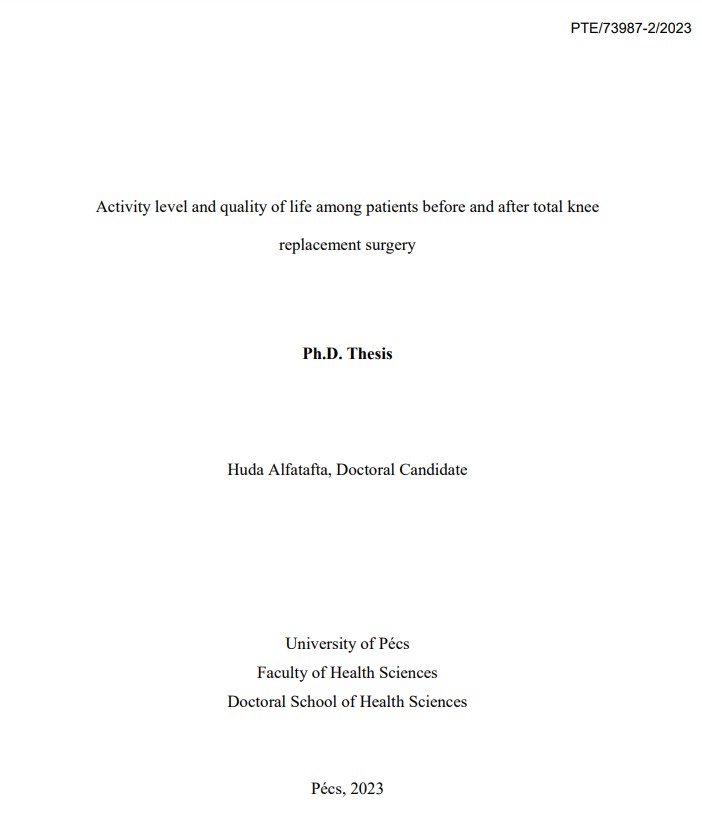Activity level and quality of life among patients before and after total knee replacement surgery
Abstract
Knee osteoarthritis (OA) is a serious musculoskeletal injury and the leading cause of disability, low activity level, and low quality of life in Hungary and worldwide. Various treatments are currently available to address knee OA that could be knee valgus brace and total knee replacement (TKR). The two different interventions aim to reduce pain and increase the activity level to enhance the quality of life; however, some questions are still poorly addressed, or insufficient information is available about these two types of interventions. So, this thesis covered four aspects and found that using the knee valgus brace could reduce pain and enhance the quality of life, but using the knee valgus brace could be more recommended and suitable for patients with mild and moderate knee OA than others. In addition, total knee replacement surgery is an effective surgery, and the number of steps significantly increased after surgery; however, the sedentary time was still high and could reduce the efficiency of the surgery. Therefore, to increase the efficiency of TKR surgery, it is important to reduce sedentary time. Furthermore, the activity level and pain among the recruited Hungarian patients were enhanced one year after surgery; however, the sedentary time after surgery should be reduced more to reach the maximum benefits of surgery. Moreover, the recruited Hungarian patients with severe knee OA had low activity levels and high pain level, and the recruited Hungarian women with severe knee OA had lower functional levels due to emotional problems than the included Hungarian men. Hence, it is necessary to include intensive emotional treatment in the rehabilitation strategy for patients with severe knee OA in Hungary to enhance their quality of life. Finally, further studies are recommended with more participants and longer follow-ups.

